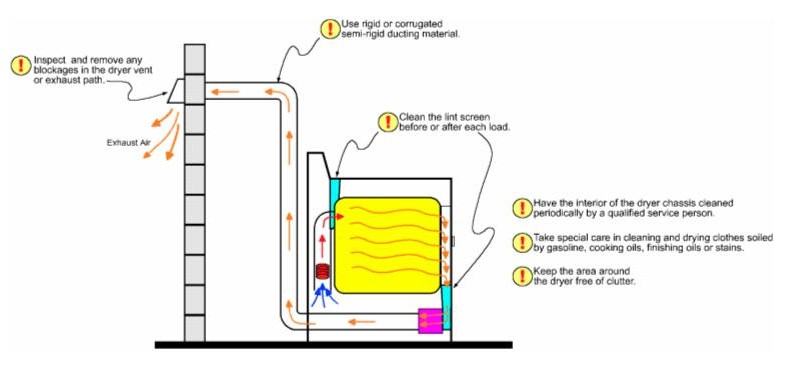When it comes to dryer vent cleaning, the design of the vent itself plays a crucial role in the maintenance process. Different vent configurations can present unique challenges and affect the efficiency and effectiveness of cleaning. In this blog, we will explore the impact of dryer vent design on cleaning and provide insights into overcoming these challenges for a safer and more efficient home.
Long and Convolution Vent Systems
Long and convoluted dryer vent systems, often found in larger homes or commercial settings, pose a significant challenge during cleaning. Transitioning from one section to another can be difficult, making it harder to reach all areas of the vent. To overcome this, utilizing specialized cleaning tools with flexible extensions can help navigate through the twists and turns, ensuring a thorough cleaning.
Rooftop Vent Configurations
Dryer vents installed on rooftops are becoming increasingly common. While these installations help optimize space inside the home, they can be particularly challenging to clean. Climbing onto the roof and accessing the vent requires caution and safety measures. Additionally, rooftop vents are more susceptible to debris accumulation due to their elevated position. Regular cleaning schedules and the use of extension poles or professional services are recommended to ensure proper maintenance.
Multiple Bend Configurations
Vents with multiple bends, such as those found in tight or confined spaces, can impede the flow of air and increase the likelihood of lint buildup. Cleaning these vents requires patience and attention to detail. Utilizing a combination of vent brushes, compressed air, and vacuuming can effectively dislodge trapped lint and debris in these hard-to-reach areas.
Vent Caps and Louvers
Dryer vent caps and louvers are designed to prevent pests, birds, and debris from entering the vent system. However, they can also accumulate lint and obstruct airflow, reducing the vent’s efficiency. Cleaning the vent caps and louvers regularly is crucial to maintain proper ventilation. Removing the caps and using a vent brush or vacuum attachment can help dislodge any lint or debris.
Vertical Vent Configurations
Vertical dryer vents, especially those spanning multiple floors, require special attention during cleaning. The downward flow of lint and debris can accumulate in lower sections, leading to blockages and reduced airflow. A combination of vent brushes, flexible rods, and vacuuming is recommended to thoroughly clean vertical vents. Working from the bottom up ensures that all sections are properly addressed.
Conclusion
The design of dryer vents has a significant impact on the cleaning process and overall maintenance of these essential systems. Long and convoluted vents, rooftop installations, multiple bends, vent caps, and vertical configurations all present unique challenges. However, with the right cleaning techniques and tools, these challenges can be overcome, ensuring a safer and more efficient home.
Regular dryer vent cleaning is crucial to prevent fire hazards and maintain optimal dryer performance. By understanding and addressing the impact of vent design on cleaning, homeowners can take proactive steps to ensure the longevity of their appliances and the safety of their households.
Remember to schedule regular cleaning and maintenance for your dryer vent, and consider seeking professional assistance for complex or hard-to-reach vent configurations. By prioritizing dryer vent cleaning, you can enjoy peace of mind and a healthier living environment for you and your loved ones.

